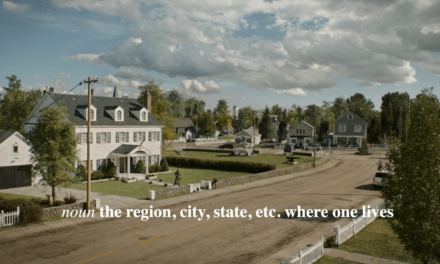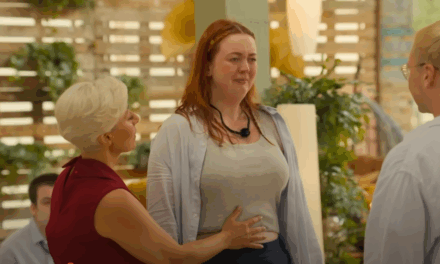In a recent Sight and Sound article (March 3 2017) Nick James made an interesting observation about BBC1’s latest historical/period drama, Taboo (BBC1, 2017, Scott, Hardy et al). Likening its look and characters to an Alan Moore graphic novel (“From Hell”), Taboo, according to James, has a “peculiar iconography” that “yearns to be linked…with the shadows…only graphic novelists care about.” (James, March 3, 2017). It is an interesting description on many levels, but mostly because what I think James actually observes is an example of how many contemporary television period dramas no longer ‘play it straight’, but actually draw from popular culture, and draw attention to the act of being a modern representation of history; of being a contemporary production.
Graphic novel aesthetics aside, it is certainly the case that Taboo, as with many other contemporary television period dramas, constructs a historical narrative set in Regency London that relies on what De Groot calls “dissonances” (2011) – a narrative and aesthetic strategy that both divides and sutures the past and present in a variety of ways. For De Groot these ‘dissonances’ can be seen in those moments that stress the difference between then and now through issues such as race equality, rights for women, in fact any issue that relates to discourse on civilisation, emancipation, democracy (De Groot 2011). To this list I want to add secularism also, and the popular cultural practices that have arisen from this aspect of modernity. The graphic novel elements that James observes and refers to in his viewing of Taboo can be considered as just one example, element, or strategy employed by contemporary TV period dramas to encourage engagement in ways which go beyond the traditional history lesson. This is a dissonance of sorts because although Taboo does tap into contemporary discourses of civilization and democracy – what Srecko Horvat of the Guardian describes as today’s “international capitalists” (2017, 25 Feb), via the East India Company – the drama, more interestingly, also taps into a contemporary TV landscape (popular cultural practices) where programmes not only have to show high production values, but bewildering difference and tacit intertextuality (hence James’ ‘Graphic Novel’ reference). Further, this desire to demonstrate the act of ‘doing history’ (De Groot 2011) encourages a modern engagement (with BBC dramas, if nothing else) that can be understood also as a fetishizing of history on television that potentially has commercial and global appeal. As viewers of Taboo will concede, fetishism is an entirely appropriate term and concept to consider where this drama is concerned; ‘Molly Houses’, Brothels, a pseudo sado-masochism, tattoos, sorcery and testosterone-fuelled obsessions, permeate this drama and attempt to re-write the conventional period drama experience.
As Paul MacInnes of The Guardian observes, pressures in a contemporary saturated TV market have forced producers to make their programmes stand out either through “moments of sex, violence, or dramatic contrivance” (2017, 15 Feb), and the period drama is no exception to this way of thinking. Along with an imaginative soundtrack by Max Richter, which pays more than a passing nod to the imaginative and unorthodox use of music in that other BBC period drama, Peaky Blinders (2013-16), I will argue that Taboo uses these aesthetics and themes as a means of remediating history in ways that tap into more modern subjectivities and which recognise more global ideas of production, distribution, and consumption. As Tobias Steiner describes it, this is “Period Drama 2.0” (2016), a description that takes in concepts of serialization, a correlation with advances in technology, observance of “competing narrowcasting networks” and “niche audiences”, and a change in cultural practices that relate to a contemporary mediascape (Steiner 2016). Taboo, in short, is modern television in a ‘post-television’ media landscape.
In terms of Steiner’s concept of Period Drama 2.0 the BBC’s Taboo creates a viewing experience where De Groot’s concept of ‘dissonance’ takes on a new meaning. Taboo, despite the promise of a second season, has not experienced universal popularity or critical acclaim. Early criticism of the drama focused on “incoherent mumbling” (Mirror, 25 Feb, 2017), but also Tom Hardy’s bewildered-looking James Delaney who found similar looks and feelings amongst critics and audiences alike in their attempt to follow an at once familiar, yet uncanny world. Dissonance, in this respect, whilst relating to a dividing and suturing of then and now, also lies in Taboo’s transcendental approach to history. The effect is not unlike the uncanny and sublime sensibilities of the age it depicts and that age’s fascination with the gothic. As Steiner observes with reference to a whole host of recent period dramas such as Deadwood (HBO, 2004-6), Rome (HBO, 2005-7), Mad Men (AMC, 2007-), Boardwalk Empire (HBO, 2010-14), Masters of Sex (Showtime, 2013-), along with an “astonishing level of verisimilitude…made possible by digital technology” (Steiner 2016), both Taboo and these other period dramas offer a hybrid form of entertainment that transcends ‘official’ forms of knowledge in favour of less easily documented sensibilities. Steiner, quoting Janet McCabe, describes these complexities of Period Drama 2.0 as “an entangled, layered ‘after-life’ of images and historic objects, re-imagined into original television drama… producing historical verisimilitude, of understanding the past alive in the present” (McCabe 2013).
The complexities of what Steiner calls period drama 2.0, however, might not be the only issue to impact (afflict?) an coherent understanding of Taboo. The era itself, as depicted in Taboo, could also serve to explain the drama’s machinations, themes, and visual style. A largely unfamiliar era and chapter in British history, Taboo’s setting in a pre-Victorian Regency London only serves to obfuscate any familiar reading. Tom Hardy himself only serves to complicate the matter by describing his character as modelled on Bill Sykes (Victorian/Dickensian), Marlow from Conrad’s Heart of Darkness (Victorian) to “a Werewolf” (disingenuous) (Indiewire, 2017, Feb 16). Interestingly, Paul MacInnes of the Guardian follows a similar horror theme by describing Taboo as “completely batshit” (2017, Feb 15), but the confusion is real regarding era-specificity with The Guardian and Sight and Sound describing Taboo as ‘Pre-Dickensian’ in the hope that that label and reference to a more familiar period will make things more clear. Confusion reigns with MacInnes describing the watching of Taboo as “frustrate-watching” – the process of persisting with a TV programme even though it frustrates you (2017).
But on a more serious note, the era and setting of Taboo could be significant to how and when a history is told on TV. It has long been a pet thought of mine that certain histories and periods are more popular or resonant on TV at certain times, and for certain reasons. Taboo could be understood as one of those period dramas that focus on what Marie Maillos describes as “transition eras” (2016, 21) or interregnums. For Maillos, these period dramas depict the past “in a very different manner” as they deal with periods of uncertainty. In these kind of period dramas the epochs or eras depicted act not just as settings, but as narrative tools in their own right. The uncertainty and at times incoherence of Taboo potentially represents the uncertainty and incoherence of the times it is set in. More likely, however, taking from De Groot’s ‘dissonance’, and Steiner’s entangled complexity of period drama 2.0, Taboo represents a more contemporary uncertainty and period of transition.
Kenneth A Longden has lectured as part of the academic staff at Liverpool John Moores University in Media, Critical, and Creative Arts, and studied for a MPhil/PhD in Transnational Narratives at The University of Winchester. He is a Fellow HEA, and a Peer-Reviewer for various academic journals. He has been published by Intellect Books and Palgrave MacMillan, and writes on Popular Narrative, Film, Television, Fandom, and Popular Culture. He is currently lecturing at Salford University.
Works Cited:
De Groot, J., 2011. ‘Perpetually dividing and suturing the past and present’: Mad Men and the illusions of history. Rethinking history, 15(2), pp.269-285.
Maillos, Marie. (2016) ‘From Downton Abbey to Mad Men: TV Series As The Privileged Format for Transition Eras. International Journal of TV Serial Narratives. Vol. 1, No. 2 (Spring) pp. 21-34
McCabe, Janet. 2013. “HBO aesthetics, Quality TV, and Boardwalk Empire.” In Television Aesthetics and Style, edited by Jason Jacobs and Steven Peacock, 185–97. London: Bloomsbury Academic. p. 185.
Steiner, Tobias. (2016) The Genesis of Period Drama: A History of History in US Television [Unpublished dissertation chapter].
James, N. (2017) Taboo:Tom Hardy Prowls Pre-Dickensian London’s Heart of Darkness. Sight and Sound Magazine
Horvat, S. (2017) Tom Hardy’s Taboo goes to the heart of our new imperialist darkness. The Guardian
MacInnes, P. (2017) Tom Hardy’s Taboo and the magical art of TV frustrate-watching. The Guardian




